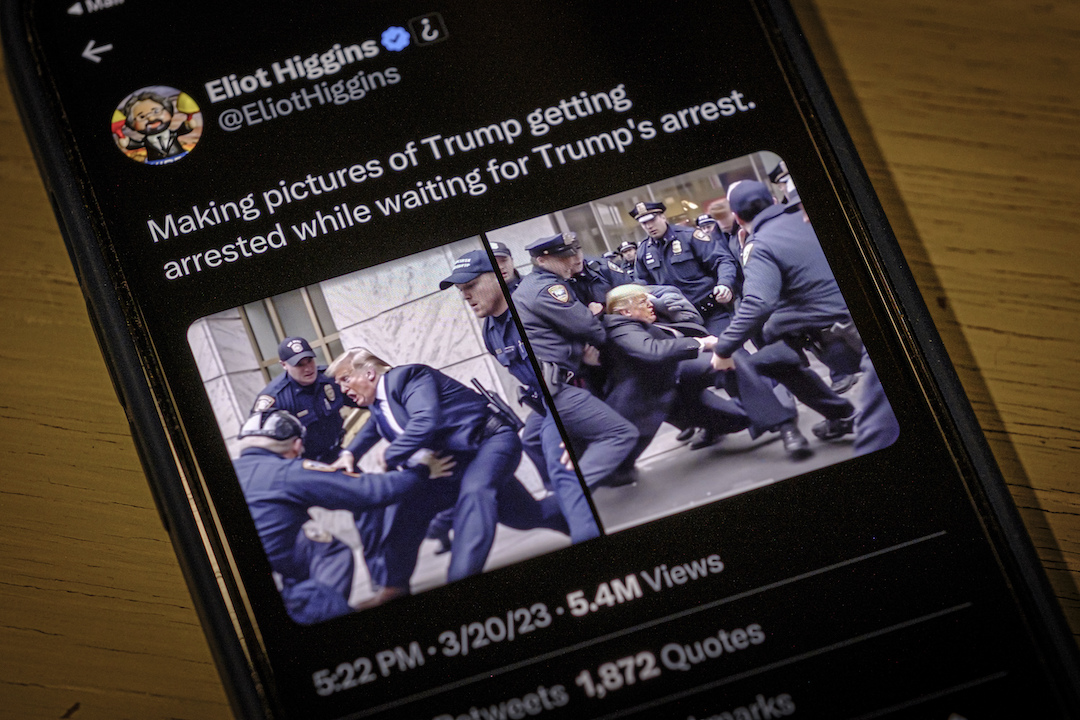It’s easy to sit back and shake our heads at the mistakes the CBS crew made along the way. But the report provides a great case study for reporters looking to scrutinize their own practices.
If an investigative team took a magnifying glass to your last big story, what would they find? What if someone attempted to surmise your state of mind at every stage of the reporting process? What if they recreated all your casual conversations, as well as your formal interviews?
Other than the instructions to “get it right,” there really is no step-by-step formula for reporting a complicated story. Most reporters develop their own methods and practices, occasionally sharing some tips along the way. It’s a messy process, often compared to sausage making. Here are a few tips that can be gleaned from the CBS report that might help you improve your own reporting process.
Check out your source. How do you know your source is who he claims to be? Every newsroom has a legendary story of a naïve young reporter who was duped by some guy on the corner into attributing a quote to a silly name or to a person who is well-known locally. Standards vary from newsroom to newsroom, but most reporters are left to their own devices to verify a source’s personal story. Should you ask for identification? Check with his workplace to make sure he does the job he says he does? Lt. Col. Bill Burkett refused to be interviewed by the CBS panel. But the report details the thin efforts by producer Mary Mapes and her team to vet Burkett and his story. The panelists, Dick Thornburgh and Louis Boccardi, suggest throughout the report that had Mapes brought a stronger measure of skepticism to Burkett and his story, red flags would have been raised along the way.
Dismiss unreasonable demands immediately. Burkett made some unusual requests, according to the report. In addition to asking Mapes to put him in contact with the Democrats, he wanted money, a security detail, and the promise that his family would be relocated if they were threatened. Sources often make ridiculous demands that are beyond the scope of what most newsrooms provide. When journalists humor the possibility of meeting those demands, it poisons the reporting process. Demands for money and other favors should be politely turned down. “We don’t do that.” “We can’t do that.” A source who believes he can directly gain money or other favors from journalists may be more likely to taint information to make it appear more valuable.
Vet requests for anonymity. Lt. Col. Bill Burkett would not have met the criteria most newsrooms impose before granting a source anonymity. He had been quoted by name in several stories, including one on CBS’s “Evening News” that accused officials in the Bush camp of “scrubbing” the president’s military record of unfavorable information. Those accounts are available to anyone with access to the Internet. His request to remain anonymous didn’t make any sense after he had already been quoted extensively. It’s not unusual for a source who has been previously quoted to request anonymity on a later story, but the reason should be obvious and explained. Sometimes a source is releasing information he’s not authorized to release. Sometimes he’s been ordered by a superior to keep quiet. If granted, reasons for the anonymity should be explained, as much as possible, to the viewer or reader. If there’s no clear need for anonymity, newsrooms should be especially reluctant to grant it to people who have already been quoted in previous stories.
Follow the chain of possession. Every crime reporter has been in court gazing out the window while a lawyer has frittered away what seems like hours establishing the “chain of possession” for every single piece of evidence entered into the record. It’s boring stuff for the most part. But it’s important to the justice system to ensure that evidence in criminal trials, whether it’s the murder weapon or the DNA sample, is properly handled so that no one can tamper with it or substitute other material.
It’s a good lesson for reporters. Any time you have a document or a photograph, you should know where it’s been and how it landed on your desk. You might even want to tell the audience. Is it a copy or is it an original? Who else has seen it? Where did it come from? The CBS report places great emphasis on the failure to get the Killian memo authenticated by experts. It spends less effort on this simple technique of interviewing the people involved along the way. When this isn’t possible because the chain of possession is unknown, that should be a red flag as well.
Beware of the “holy grail.” The CBS report says that on Aug. 23, when Mapes “seemingly out of the blue” learned of the Killian memo, she speculated that it was the “holy grail” for which CBS had been searching. Life is rarely this neat and tidy. Reporters who’ve waited for months for FOIAs to come through or court records to be made public know that documents rarely support the concrete conclusions that you hope they will. Memos and reports are often couched in bureaucratic language and jargon. They don’t make much sense, let alone point to malfeasance or incompetence, absent any context. More often, a document becomes a building block in an investigative report, not the lynchpin.
In fact, the CBS crew thought they were pursuing a classified disciplinary report that indicated Bush was unfit to fly planes with nuclear weapons, not a personal memo.
Be candid about your progress. It’s hard to tell your boss that you’re running in circles. But most complicated stories involve slow progress, if any. The CBS report says Mapes repeatedly told her superiors that she was getting close, that other media outlets were hot on the trail as well and that she would have a story in September. But the report says she rarely said exactly what she was doing or planning to do. Keeping your work too close to your vest deprives you of the opportunity to get fresh ideas and opinions. It is a breeding ground for “myopic zeal.”
Question your timing. Mapes first researched President Bush’s service record in 1999. The report does not say why she dropped the investigation until the summer of 2004. But it’s easy to imagine similar circumstances. It’s not usual for long-standing rumors of philandering, gambling, and illegal behavior to swirl around a few figures on any city council, county commission, or state legislature. When pursued, sometimes these rumors develop into well-known investigative stories, like the Brock Adams sexual harassment story reported by the Seattle Times, which was a finalist for the 1993 Pulitzer Prize in public service.
But more often these stories lie untouched, or barely touched. The urgency to report them rises and falls with the central character’s popularity or penchant for controversy. It’s unrealistic to suggest that every rumor be investigated the moment someone in the newsroom hears it.
Journalists should discuss the threshold for investigating and reporting such a piece in the future. At what point in the future would the urgency of a story rise to a level that reporters ought to investigate it? Asking such questions makes it more likely a newsroom will start working sooner, rather than later, on investigative matters.
The CBS report is worth a read by reporters everywhere. It describes critical moments in the reporting process where red flags were ignored, bad choices were made and individuals allowed their assumptions to go untested. All of that happens every day in newsrooms across the country, but most often the mistakes are caught before they get published. The reporting process is fraught with potential for failure. Reading about the breakdowns in some other newsroom can help you find the weaknesses in your own.






